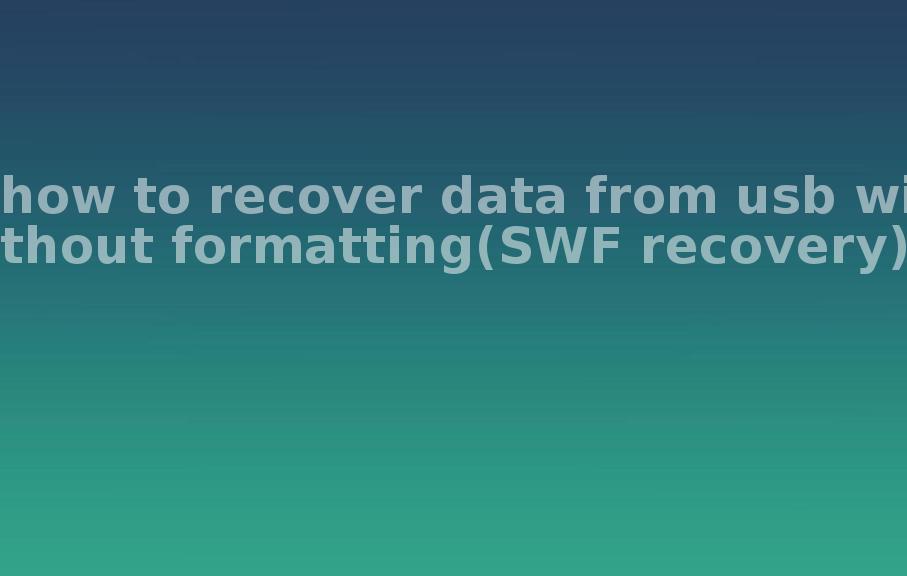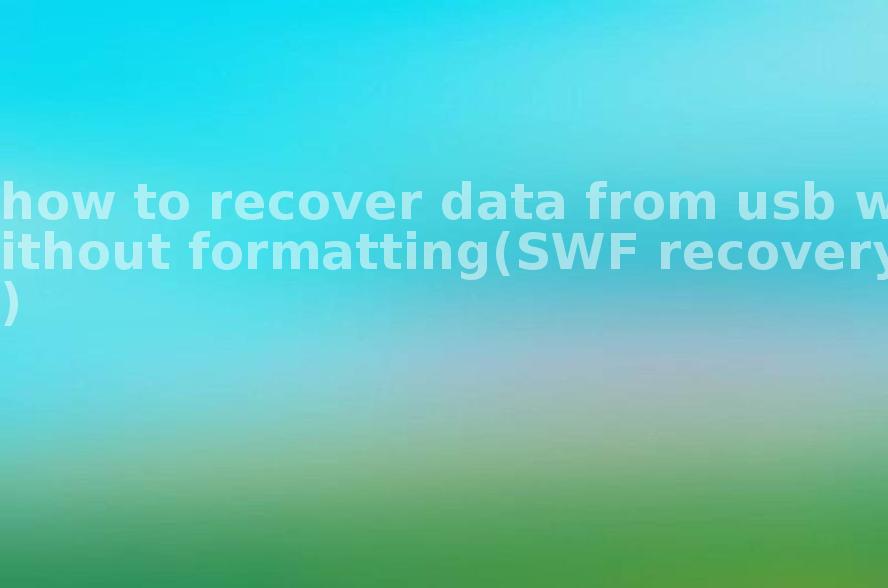how to recover data from usb without formatting(SWF recovery)
2023-10-20 04:00 246
Part I. Overview of the context in which the document was recovered:
The need to recover data from a USB without formatting usually arises in situations where valuable data is lost or inaccessible due to file system errors, accidental deletion, or corruption. These scenarios can occur due to various reasons, such as:
1. Accidental deletion: Users might accidentally delete important files from their USB drives, either by pressing the wrong button or while trying to free up space.
2. File system errors: File system errors, such as corruption or damage to the FAT or NTFS file systems, can render the USB drive inaccessible. This can occur due to sudden removal of the drive without proper ejection, power outages during data transfer, or malware infections.
3. Virus or malware attacks: USB drives can become infected with viruses or malware when plugged into infected computers. These malicious programs can corrupt files, making them unreadable or inaccessible.
Part II. Causes of data loss in USB drives:
1. Logical errors: Logical errors occur when the file system becomes corrupted or damaged. This can be due to power failures, improper ejection of the USB drive, or software conflicts. As a result, the drive may become unreadable or display incorrect file and folder structure.
2. Physical damage: USB drives are susceptible to physical damage, such as being dropped, exposed to extreme temperatures, or subjected to water or fire damage. Physical damage can cause the drive to malfunction, making it impossible to access the stored data.
3. Accidental formatting: Users may accidentally format their USB drives, either due to confusion with external drives or unintentional clicks. Formatting erases all the data on the drive, making recovery difficult without specialized tools.
Part III. Solution for recovering data from USB without formatting:

1. Use data recovery software: There are various data recovery software programs available that can help recover lost data from USB drives without formatting. These tools scan the drive and retrieve the lost or deleted files.
2. Professional data recovery services: In case the data recovery software is unable to recover the desired files, professional data recovery services can be sought. These services have advanced tools and expertise to recover data from physically damaged USB drives.
3. Use command prompt: If the USB drive is not being recognized or assigned a drive letter, using the command prompt can help. By using the "diskpart" command in Windows, you can attempt to repair and recover data from the USB drive.
Part IV. Types of other files that can be recovered:
Apart from documents, various other types of files can be recovered from USB drives, including:
1. Photos and videos: USB drives are often used to store photos and videos. Recovery software can help regain access to lost or deleted media files.
2. Audio files: Music or audio recordings stored on a USB drive can also be recovered with data recovery software.
3. Archived files and compressed folders: USB drives are commonly used for storing compressed files or folders. Recovery tools can help restore these archived files.
Part V. Frequently Asked Questions:
1. Is it possible to recover data from a USB drive without professional help? Yes, it is possible to recover data from a USB drive without professional help by using data recovery software. However, if the drive is physically damaged or the data recovery software is unable to retrieve the desired files, seeking professional assistance may be necessary.

2. Can I recover files from a formatted USB drive? Yes, it is possible to recover files from a formatted USB drive using data recovery software. However, the success of the recovery depends on factors such as the extent of formatting and whether new data has been overwritten on the drive.
3. How long does USB data recovery take? The time required for USB data recovery depends on various factors, including the size of the drive, the extent of data loss, and the efficiency of the data recovery software. Smaller drives with fewer files may be recovered in a shorter time, while larger drives with extensive data loss may take longer.









